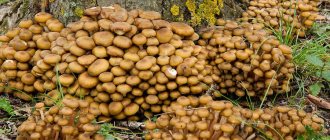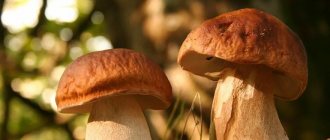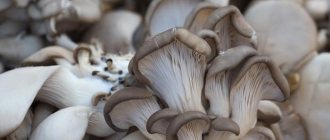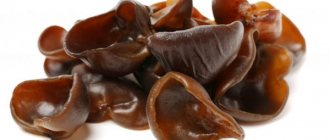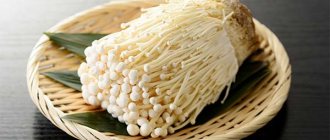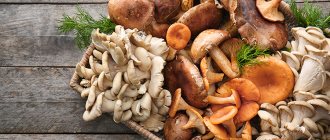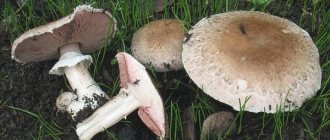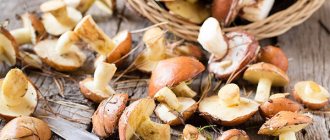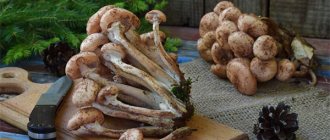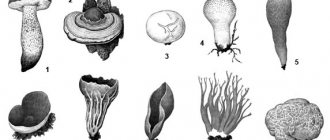Camelina is a herbaceous annual plant of the Brassica family. The second name of the herb is camelina. This plant is unpretentious, tolerates drought and heat, is not susceptible to fungal diseases, and easily adapts to different climatic conditions and soil composition.
In the wild, the grass grows everywhere: in Europe, Central Asia, China, North America, Korea and Japan. Currently, Camelina is actively cultivated and used mainly in two ways: as a honey plant and as a raw material for the production of camelina oil. The unrefined product is used in industry for the production of drying oil and lubricant; after purification, it is used in folk medicine, cosmetology and cooking. The cake is used as feed for livestock, and the seeds for poultry.
Biological features of camelina: description and characteristics of the plant
Camelina sativa (L.) Crantz.) belongs to the cabbage family. The stem of the camelina is straight, woody, highly branched and non-lodging. The height of the stem is from 30 to 80 cm. The flowers of camelina are small, yellow, have four sepals, and the inflorescence is a raceme.
The fruit is a multi-seeded pod 6–8 mm long, pear-shaped or pear-shaped-rounded, splitting into two valves when ripe. A pod usually contains 13–16 seeds. When ripe, the pod does not crack. The seeds are small (1.5–2.5 mm), reddish-brown, oblong-oval. According to the method of pollination, camelina is a facultative self-pollinator with a proportion of cross-pollination from 10 to 25%.
Just like rapeseed, there are two forms of camelina: winter and spring. Winter camelina is undemanding to environmental conditions, easily adapts to various soil and climatic conditions, and overwinters where winter rapeseed and rapeseed are frozen out. In addition, it is practically not affected by pests, in particular cruciferous flea beetles.
Camelina belongs to the group of early ripening crops. The length of the growing season depends on the meteorological conditions of spring and summer. The full development cycle - from the beginning of germination to ripening, including the winter dormancy period - averages 300 days.
Full ripening of plants in the conditions of the Samara region is observed in late June - early July. Under favorable conditions (the optimal time for sowing camelina in moist soil and temperatures above +10°...+12°C), seedlings appear in 5–6 days.
In autumn, camelina plants develop a rosette of 6–8 basal oblong leaves on petioles. This is the main factor for good overwintering of plants. However, even in the phase of 2–3 leaves, overwintering can be quite successful. In the second ten days of May, the camelina begins to form a rough stem with numerous sessile stem leaves. In dense crops, the stem branches in the upper part into 5–8 lateral stems; in sparse crops, branching begins at a height of 3–5 cm from the soil surface.
Winter camelina blooms in the third decade of May and lasts, depending on weather conditions, from 20 to 30 days. In the second ten days of July, and in dry years at the beginning of July, the camelina ripens and is ready for harvesting.
Winter camelina is undemanding to soil and can grow on light, rather poor, even sandy soils. But the best for it are leached, rich, light loamy and sandy loam chernozems. On solonetzic soils with a heavy mechanical composition, camelina develops poorly, as a result of which its yield sharply decreases. On such soils, in dry autumn and early spring, as a rule, a soil crust forms, from which the crops can be greatly thinned out.
Spring camelina is sown in the earliest possible time in spring. Just like the winter form, it has small seeds, so all the problems of obtaining uniform shoots are associated with shallow seeding, unevenness of the soil at the time of sowing and the ability of pre-sowing and sowing tools to provide accurate parameters and agrotechnical requirements for sowing small-seeded crops.
The growing season for spring saffron milk cap is 73–79 days, and it is usually ready for harvesting in mid-July, which practically coincides with the harvesting period of winter grains. This makes it possible to use spring camelina in binary stands with winter wheat, especially in occupied pairs where it is not possible to obtain friendly shoots of the cereal component due to the lack of precipitation since the fall, and if shoots appear late, they are sparse in the spring. As a rule, such crops are sown with spring crops - oats or barley, but due to the uneven ripening period, difficulties are created when harvesting such mixtures.
Ginger is unpretentious in care, withstands bad weather and short-term drought.
Spring camelina, due to its ripening time at the same time as winter wheat and the ability to easily separate crop seeds after threshing, is more suitable for these purposes.
In the spring, it can be sowed into sparse crops of wheat or rye along with fertilizing with broadcast fertilizers or with direct sowing with disk seeders at a rate of 12–15 kg/ha.
Place in crop rotation. In the early stages of its development, camelina is easily drowned out by weeds. Therefore, it is not recommended to place it as the last crop in crop rotation where root shoot weeds have developed. The best predecessors will be pure fallow or early harvested crops. These are annual fodder mixtures based on oats, grains and legumes. Camelina should not be placed in fields where long-acting herbicides, for example Pivot or Defizan, were used on grain and legume crops.
Camelina is one of the most drought-resistant and therefore one of the most dynamic crops on the market.
Camelina should not be placed after cruciferous crops (mustard, rapeseed, rapeseed), which have common diseases and pests with it. The camelina itself, due to its inherent precocity, is a good predecessor for winter and spring cereals, row crops and leguminous crops, especially when applying mineral fertilizers for the main processing. It can be a good fallow and green manure crop that increases soil fertility.
Fertilizers. Despite the undemanding nature of soil and climatic conditions, camelina responds positively to the application of fertilizers. Doses of mineral fertilizers are determined depending on the supply of nutrients to the soil and the need of plants for them to form the planned yield. For the conditions of the Middle Volga region, the optimal dose of mineral fertilizers for pre-sowing soil treatment is N30 P60. This increases seed yield and oil content in seeds.
Just like winter grain crops, winter camelina responds well to spring fertilizing with ammonium nitrate at a dose of N30. With such a fertilizer system, the yield of camelina at the Penza Research Institute of Agriculture increased by 10.6% compared to the control and amounted to 17.8 c/ha.
Botanical description
This is a one- or two-year plant of the Brassica family. The height of the stem is from 30 to 80 cm, it grows upright, is bare below, and has a branched part closer to the top. There are few leaves, they are sessile, lanceta-shaped, with sharp tips. Width - from 2 to 15 mm, length - up to 10 cm. The flowers are yellow, the petals are wedge-shaped and rounded closer to the top. Type of inflorescence – raceme. Camelina blooms in May and bears fruit in June. Pollinated by insects.
The fruit is a pear-shaped pod, the walls of which are thick and convex. Up to 10 mm in length and 5 mm in width. It is attached to a thin peduncle, from which it is formed and is noticeably deflected in relation to the stem. The pod contains oval seeds, 2x1 mm in size, reddish-brown in color.
History of growing camelina sativum
Growing camelina sativum is not difficult, thanks to its high survival rate and unpretentiousness. Camelina began to be cultivated as a crop only at the beginning of the 20th century. It was considered a weed and only a few knew about the usefulness of the plant.
In the second half of the 20th century, camelina was noticed and already in the 60s, the crop occupied about four hundred thousand hectares of cultivated area around the world. The plant was grown mainly for oil extraction, as a filling material for lighting fixtures, and for the preparation of cosmetics.
Cream with camelina oil.
Later, camelina was used to prepare medicinal drinks and wound-healing ointments. Herbalists used the plant to combat eye inflammation and gastrointestinal diseases.
At the end of the 80s, the crop lost its importance and popularity, and camelina was replaced by more popular oilseeds, such as soybeans and olives.
Harm of camelina oil
When people start resorting to traditional medicine, they often do not think that such remedies can also have a lot of contraindications and other side effects, just like conventional drugs from the pharmacy.
This also applies to the oilseed crop camelina. It should not be taken in large quantities, nor should it be used as a source of fat.
Any food should contain up to ten times more linoleic acid, unlike linolenic acid. And camelina oil contains linolenic acid in excess, so the product may well be harmful.
Chemical composition of Rijika
Since the main use of this plant is seed oil, more attention is paid to the chemical composition of the fruit. They include:
- from 33 to 42% fatty oils;
- from 25 to 30% protein;
- vitamin E.
Based on this composition of the seeds, the oil from them has an even more substantial composition.
Biologically valuable acids:
- linoleic; eicosene;
- stearic; palmitic;
- erucic; epoxylinolenic;
- gondoinic.
And:
- beta-carotene;
- phospholipids;
- sterols;
- microelements.
Mainly represented by magnesium (Mg).
Benefits of camelina oil
Oil obtained from a plant such as camelina is valued because it contains omega3 and omega6, which are so necessary for humans. Scientists have proven that these components prevent the appearance of cholesterol plaques. After all, it is thanks to this that the risk of stroke and heart attack decreases. In addition, polyunsaturated acids reduce the likelihood of arthritis and osteoporosis, since they normalize the level of a mineral such as calcium.
Camelina oil also contains vitamins A, D, E and K, while it contains much more vitamin E than other types of oils of plant origin. Vitamin E is needed for the development of a healthy reproductive, nervous system, heart, and blood vessels. Tocopherol can also maintain natural beauty and prolong the youth of skin cells. It is considered a good antioxidant that serves as protection against early aging, restores tissue, strengthens the immune system and reduces the likelihood of developing cancer.
Although there are not as many other vitamins in the camelina oil of this plant as tocopherol, they bring considerable health benefits. Vitamin A contained in this product is beneficial for the eyes and vision, and with its deficiency, the condition of the skin worsens, and the processes of cell and tissue restoration are inhibited. Vitamin D, found in camelina oil, is needed to ensure that phosphorus and calcium are well absorbed, and also plays a major role in the development of bone tissue, the deficiency of which not only affects the immune system, but also the risk of osteoporosis.
Camelina oil is also rich in minerals, in particular magnesium, which is involved in the metabolism of protein, calcium and energy. Magnesium is vital for blood vessels, heart, bones and muscles. In addition, this oil is useful for those who suffer from diabetes, because magnesium also normalizes insulin metabolism.
The oil produced from camelina also contains biological substances that have antibacterial and restorative effects - for more details, see the beneficial properties and contraindications of camelina oil
Useful properties, application, benefits and harms of camelina
Due to the abundance of beneficial properties, camelina is used in many industries. Oil is obtained from the plant; it is widely used in cosmetology and pharmacology. Infusions and decoctions are prepared from the plant, and young plants are most often used for their preparation.
Flowers and stems of young plants successfully cope with the healing and regeneration of the skin, help eliminate acne, dryness and flaking. Use no more than 50 grams of camelina to keep the body in good shape. You can take both oil from the seeds of the plant and tinctures.
Camelina sativa is a powerful immunostimulating plant due to the concentration of vitamins and minerals, as well as organic acids.
Camelina is an oilseed crop; it absorbs more than 45% of fatty acids. It contains linolenic, erucic, stearic and eicosenoic acids.
Due to the high content of acids, and along with it vitamin E, camelina prevents the formation of free radicals in the body (stimulating the cell to degenerate into a malignant one), thereby preventing the formation of cancer.
Vitamins of group B, as well as E, D, K and retinol, have rejuvenating properties, so camelina oil is actively used in cosmetology, for preparing masks and massage.
In addition to the above microelements, camelina contains large amounts of magnesium, calcium, zinc, iron, and potassium phosphorus. All these substances together form a powerful tonic effect for the body.
Camelina oil.
Camelina sativa marmalade.
Camelina oil moisturizes, nourishes and rejuvenates the skin of the hands, face and body. Infusions of camelina are used in the form of lotions for better skin regeneration and restoration of its protective barrier. Camelina boosts immunity, stimulates hair growth, and has antioxidant properties.
Note! Camelina oil can cause allergic reactions, so before use it is necessary to test for individual intolerance.
Medicinal properties
The main product of Camelina is oil, and it is this oil that is actively used in various areas of our lives, including in medicine.
Camelina oil, due to its high content of vitamin E, is an excellent antioxidant, and due to fatty acids (about 60%) it is an effective component in the complex treatment of diseases of the cardiovascular system, stabilizing blood pressure, normalizing cholesterol and lipid metabolism.
As a source of Mg, the oil product is indispensable in the metabolic processes of the body, namely, during energy exchange (protein and carbohydrate). This is the prevention of osteoporosis, atherosclerosis, high blood sugar and prostate problems. Its nutritional value, vitamin and mineral composition and taste are often equated to sesame and flax seed oil.
Use of camelina sativum in folk medicine
Medicine uses the plant in the form of infusions to combat cancer. Among the indications for moderate use of the medicinal product:
- urolithiasis disease;
- diabetes;
- osteoporosis;
- obesity;
- weakened immune system;
- diathesis; psoriasis;
- hives;
- neurodermatitis.
A significant advantage of camelina oil is that its composition is not inferior to flaxseed oil, it is more stable and does not oxidize so quickly, and is not hazardous to health.
By consuming 15 ml of the oil product daily, you cover the body's daily need for vitamin E, which supports the functioning of the cardiovascular system, muscles and blood vessels.
The drug is also effectively used for coronary artery disease, angina pectoris, hypertension, anemia, thrombophlebitis, varicose veins, fatty degeneration, cholecystitis, liver cirrhosis, cholelithiasis, hepatitis, helminthiasis and in gynecology.
The oil base provides anti-inflammatory, anthelmintic, antibacterial, anti-sclerotic, hypoallergenic and wound-healing effect.
Regular consumption of oil allows you to rid the body of heavy metal salts, waste and toxins.
Cooking recipes
Camelina oil is the basis for many recipes. It is extracted by pressing. It is better to take a first-press product obtained by cold pressing. It is more saturated with useful substances and vitamins than the product of repeated hot pressing. The oil product, infusion, and decoction are used to stabilize blood sugar and for cancer.
Tincture
To prepare a tincture from red grass seeds, you need to first grind them, for example, in a coffee grinder. Next, pour 1 teaspoon of ground seed into 200 ml of boiling water and leave to steep for at least 40 minutes. Add the juice of 1 lemon. Take 30-40 minutes before meals 2-3 times a day.
Decoction
The decoction is prepared in the following way: ground seeds (3 tablespoons) are poured with 3 glasses of water. Cook for 10-15 minutes. Drink half a glass 3 times a day before meals.
What are the benefits and benefits of oat decoction?
Technologies for sowing camelina sativum: timing, norms and sowing methods
Sowing of camelina is carried out before winter from August 20 to September 20, or in early spring. The optimal planting time is considered to be the second ten days of May for the northern and central regions and March-April for the southern regions.
On a note! The optimal sowing time in the forest-steppe of the Middle Volga region, according to the Penza Research Institute of Agriculture, is the 3rd ten days of August - the 1st ten days of September. When sown at this time, the plants overwintered well (90–96%) and produced the best seed yield (up to 1.93 t/ha).
Plants of early sowing dates (second ten days of August) go into winter overgrown and turn out to be less resistant to unfavorable overwintering conditions. If sowing is late (3rd decade of September), the plants may not have enough time to accumulate a sufficient amount of reserve substances for normal overwintering. Some of the seedlings die, and overwintered plants develop poorly in the spring. Such crops give a reduced yield.
Under the conditions of the Samara Research Institute of Agriculture, satisfactory results were obtained when sowing camelina on September 9 and even 20. At Sev-07 LLC, on an experimental plot in 2013, winter camelina was sown on October 20. At this sowing time, the plants successfully overwintered, but by spring they were weakened, overgrown with winter weeds and provided a low seed yield.
The seeds and shoots of camelina, like rapeseed, are very small, so they are very sensitive to the presence of soil crust.
Thus, the best time for sowing in the Samara region for non-fallow predecessors, apparently, should be considered the beginning of September after 1-2 times pre-sowing treatment with disk implements with simultaneous rolling and the possibility of provoking the germination of cruciferous weeds (jarutka, shepherd's purse, rapeseed) and their destruction by cultivation or harrowing.
Spring camelina , as a rule, has the same small seeds as winter ones. And the agricultural technology of its cultivation has the same features. It is best to sow spring camelina in plowed soil or otherwise treated soil in the fall in fields that are free of cruciferous weeds at the earliest possible time, and in fields that are weeded after pre-sowing cultivation, with rolling. Here it is better not to rush with the sowing time - provoke weeds and sow early grain crops at the time of sowing.
The sowing rates for camelina depend on the sowing method and the weight of 1,000 seeds. The optimal seeding rate for the conditions of the Middle Volga region is 8 million viable seeds per 1 ha, which corresponds to a weight rate of 9–12 kg/ha.
The photo shows crops of spring camelina: on the left are young camelina plants, on the right is a general view of sowing camelina.
Deviations from this norm in the direction of decrease or increase lead to a slight decrease in yield or excess consumption of seed material. The best sowing method, which provides the most favorable development conditions, according to numerous studies, is row sowing with row spacing of 15 cm. It provides the highest seed yield. With the wide-row method, the number of brushes and pods on one plant increases, but due to a decrease in plant density, the yield decreases, but the size and uniformity of the seeds increases. This sowing method can be used to propagate seeds.
Preparation of arable land begins with cultivation, then peeling with a depth of at least 10 cm is carried out, and preparation ends with non-moldboard plowing with a depth of about 20 cm.
For sowing camelina, a grain-grass seeder SZT-3.6 and grain seeders adapted for sowing small seeds with a small seeding weight can be used. The main requirement for all seeders is uniformity of sowing and placement of seeds to a given depth. Good results are provided by the DMS Primera seeding complex.
Preparing the soil for sowing.
Sev of the saffron milk cap.
On a note! To combat weeds, broad-spectrum herbicides, such as roundal or hurricane, are applied.
The sowing depth is determined by soil moisture and its mechanical composition. Due to the fact that camelina seeds are small, they are planted shallowly in the soil, but make sure that they get into the moist layer of soil. As experience shows, the optimal seeding depth is 2–3 cm. When the top layer of soil dries out, the depth can be increased to 3–4 cm.
Following sowing, it is necessary to carry out rolling, which helps level the soil and raise moisture from the lower layers for faster and more uniform seed germination.
In the absence of precision seeders capable of sowing small-seeded crops, you can use the scattered sowing method, i.e. scatter the seeds with a mineral fertilizer spreader over rolled soil prepared for sowing (best with ballast - sifted river sand at the rate of 20–30 kg of seeds and the same amount of sand per 1 ha). Then cover the seeds with tooth harrows and roll them. This method can only be used as a last resort, since here the seed consumption must be increased by 2–3 times.
The growing season for camelina is about two to three months after sowing. The maturity period for winter saffron milk cap is longer and is about six months.
Camelina sativa is resistant to frost, ice crust, and long-term droughts.
Camelina sativa is frost-resistant, it will not be damaged by short-term frosts, and its ability to germinate at negative temperatures makes the plant the undoubted leader among oilseed crops.
Winter saffron milk cap calmly and painlessly tolerates cold temperatures down to -10 degrees. Despite the resistance of camelina to low temperatures, the most preferable temperature for germination is considered to be from +10 to + 15 degrees. The first shoots after sowing appear within a week, after which the crop quickly grows.
How to care for saffron milk cap
Even the most unpretentious plant needs care to maximize its productivity potential. Seed camelina requires fertilizing and weeding if the crop is grown for oil production, and does not require care if it is grown as green manure.
On a note! Just like with winter grains, early spring fertilizing with nitrogen fertilizers at a dose of N30 (1 c of ammonium nitrate per 1 ha) on frozen soil or root fertilizing with grain seeders at a later date will give a noticeable increase in yield.
So, mineral fertilizers are applied to plowing during pre-sowing preparation, during plowing. After sowing, the surface is leveled by rolling with rollers to eliminate the possibility of premature drying out of the soil and loss of seeds in windy weather.
In its mature form, camelina copes well with weeds, killing harmful plants in every possible way, however, at the beginning of the growing season of the crop, the need for post-emergence harrowing still arises, but much less frequently than when growing other oilseed crops. In severe cases, herbicides are used on weed fields.
Processing of camelina crops.
One treatment is enough for the camelina to grow, and when the plant rises 20-30 cm, weeds will not be dangerous for it. Camelina is a “good neighbor” crop; it will take its place in any sequence in crop rotation; it gets along well next to cereal plants.
Economic importance and application [edit | edit code]
Most types of camelina are honey plants [4].
From the seeds of camelina sativa (Camelina sativa)
Camelina oil is produced.
Plant biomass can be used as a feedstock in the production of second-generation biofuels [5] .
Camelina sativa is not at all a subspecies of mushroom, as you probably immediately thought. This is a plant that today is actively cultivated in two main directions: the initial product in the production of oil and as a honey plant.
We are increasingly beginning to look back and return to ancient recipes, so it is worth learning more about the potential of this plant.
Application of herbicides to protect camelina
Camelina is able to give a worthy rebuff to weeds, suppressing their growth, therefore, post-emergence harrowing to control weeds when growing camelina is not carried out as often and intensively as with other oilseed crops.
Regarding post-emergence harrowing of camelina crops, it should be said that camelina plants, like rapeseed plants, are quite sensitive to damage during harrowing. Therefore, if harrowing is carried out, it should be done only with high-quality light harrows, at low speed and at a time (after 12:00) when the turgor of the plants drops.
Note! No herbicides are officially registered for camelina, so the use of herbicides on rapeseed is at the farmer’s risk.
But according to some data, given that camelina, like rapeseed, is a cruciferous crop, then herbicides for camelina will be similar to herbicides for rapeseed. According to unofficial data, any graminicides can be used to control cereal weeds:
- fusilade forte (0.5-2.0 l/ha);
- select (0.4-1.8 l/ha), etc.
Broadleaf weeds are a problem in camelina crops. According to unofficial data, some herbicides can be used to control broadleaf weeds:
- Lontrel 300 (0.2-0.5 l/ha);
- Treflan (trifluralin);
- ethalfluralin.
There is also information about positive experience of use:
- pre-sowing application of glyphosate;
- Butizan 400 (1.5 l/ha);
- GALERA 334 (0.3–0.35 l/ha)
Reglon or Roundup (glyphosates) can be used for desiccation/pre-harvest control of camelina weeds.
The benefits of camelina oil for hair, how to use it at home
For hair loss, it is recommended to make your own shampoo with the addition of camelina oil. It is very easy to prepare; for this you need to pour 5 ml of oil into 60 ml of base, a decoction of oak bark, burdock roots and 10 ml of an alcohol solution.
Read also: Do-it-yourself Isabella wine at home
This version of medicated shampoo should be kept in the refrigerator for no more than a month to preserve its nutritional properties and benefits. But in case of individual intolerance to oil, you will have to forget about such a medicinal shampoo.
Oil obtained from camelina is considered one of the cheapest and most accessible for its variety of applications. No matter how it is used, it will always remain a leader among other oils. Cooking dishes using this product or adding it to a strict diet will help cleanse the body of harmful substances.
Now you know what benefits and harms camelina oil can cause and how to take it to improve your own health.
Types and varieties of camelina
Today, the cultivation of camelina sativum has again begun to gain momentum; the crop is used as feed for livestock, for the production of paints and varnishes and packaging products. Most of the sown areas of spring camelina are in the Volga region and Siberia, while winter saffron is in the southern regions of the country.
Camelina produces high yields in all of these regions, and green manure improves the productivity of crops such as flax, rapeseed, mustard and surea. The advantage of camelina as an oilseed crop is its resistance to unfavorable conditions and high productivity, regardless of the latitude of its growth.
In our country, three types of camelina predominate:
- linen;
- small-fruited;
- sowing
Among the varieties, special attention is paid to the Irkutsk local variety, Kyrgyz, Zavolzhsky, Zarya and Voronezh varieties. All of the above varieties produce high yields in any weather conditions, are resistant to diseases and are in demand among business owners throughout the post-Soviet space.
In the State Register of the Russian Federation of varieties approved for use in 2014, there are two varieties of winter camelina - Penzyak and Kozyr.
Penzyak is the originator of the Penza Research Institute of Agriculture. The variety has been included in all crop cultivation zones since 2002. It is recommended for cultivation for food, feed and technical purposes.
The stem is erect, branched, woody. Attachment of lower branches at a height of 5–30 cm. Seeds are oblong-oval, reddish-brown. Ripening earlier. The growing season is 275–300 days. Shedding is weak. Lodging is very weak.
Seed yield on farms in the Samara region is up to 18 c/ha. Weight of 1,000 seeds is 0.9–1.2 g. Fat content in seeds is 40.1–42.0%. Erucic acid content 2.7%. Winter hardiness 92–97%, frost resistance 95–99%. Resistance to soaking 90–95%. Drought resistance is high. In conditions of prolonged drought, it is slightly damaged by the ground flea.
Trump is the originator of the Penza Research Institute of Agriculture. The variety has been included in all cultivation zones since 2012. It differs from the previous one in its increased yield potential. Resistant against snow mold and other diseases. Has larger seeds. Weight of 1,000 seeds – 1.5 g.
In 2014, the State Register presented 8 varieties of spring camelina, approved for use in the Russian Federation. I would like to dwell on the spring camelina variety created at the Penza Research Institute of Agriculture. The Yubilyar variety has been zoned since 2011. It is distinguished by disease resistance, high productivity, and a higher weight of 1,000 seeds - 2.5 g. Which is 2 times higher than that of the majority of camelina varieties.
It is recommended to carry out variety renewal at least once every two years using elite seeds. Sowing testing is carried out without selecting the testing sheaf. The typicality or varietal purity of the sowing, the presence of impurities, disease damage and pest damage of camelina are established by examining the plants on the root, when 75% of the pods turn brown, when the seeds of the lower pods acquire the color characteristic of the variety.
The economic efficiency of cultivating camelina is due to the low costs of its cultivation.
Under the conditions of the Samara Research Institute of Agriculture, winter camelina in occupied fallow on average for 2010–2015. gave 8.1 c/ha of seeds. With a selling price of 10 thousand rubles. for 1 ton and cultivation costs of 3.5–4.5 thousand rubles. per 1 hectare, net income amounted to 3.6–4.6 thousand rubles. from 1 hectare, i.e. at the level of average indicators for grain crops.
Distribution and habitat [edit | edit code ]
About eight species [3] are known, growing in the Mediterranean region, Central Asia and Central Europe.
In the European part of Russia, three types of camelina grow wild:
- Camelina alyssum (Mill.) Thell. - Flaxseed camelina [syn. Camelina dentata Pers. ]
- Camelina microcarpaAndrz. ex DC. — Small-fruited saffron milk [syn. Camelina sylvestris Wallr. - Rizhik forest] - grows on calcareous slopes, sandy places and in crops;
- Camelina sativa (L.) Crantztypus - Camelina sativa [syn. Camelina pilosa (DC.) NWZinger - Hairy camelina] is an industrial crop cultivated for the production of camelina oil. It also grows as a weed in fields and along roads.
Of these, the last two are the most common. These two types differ in that in the first the pods are slightly compressed on the side of the valves, the flat edge of the valves is wide; the style is half as long as the pod, whereas in Camelina sativa
the style is 4-6 times shorter than the pod.
Diseases and pests, camelina and methods of combating them
Infrequently, but it is affected by diseases, like all crops, mainly:
White rust, when the leaf of a plant becomes covered with a whitish coating and spots. The main cause of the disease is the prolonged arrival of spring and a minimum of sunlight. The fight against the disease includes treating crops with fungicidal preparations and sowing without deviations from the sowing schedule.
Infection with downy mildew occurs during heavy rainfall and excess moisture; the manifestation of the disease begins with a white coating that quickly spreads throughout the plant and leads to rotting of the stem. Control measures include: treating crops with fungicidal preparations and observing crop rotation.
with powdery mildew , but it has also happened that this disease spreads across crops at a high rate. Powdery mildew infection occurs through the soil, so crop rotation is necessary to combat this disease.
All cereals and oilseeds are susceptible to Alternaria Intensive development of the disease occurs during warm, humid periods and spreads quickly.
In addition to diseases, camelina can also be damaged by various insects - pests.
Control methods include treatment with fungicidal preparations and pre-sowing seed treatment.
All fungal diseases, without exception, are treatable; the drugs Amistar extra, Acanto-plus are used in the fight, Bordeaux mixture and the drug Abiga-pik are often used, the listed drugs are highly effective against most fungi that cause the development of fungal diseases.
Much more often, camelina crops are attacked by harmful insects:
- rapeseed leaf beetle;
- ground beetles;
- stink bug;
- cabbage bugs.
All of these pests eat seeds, plant pulp and foliage. Pest control methods involve attracting entomophages to the fields and using chemical and biological means of protection.
A well-proven method of planting trap plants around the perimeter is to distract insects. For complete destruction, trap plants are sprayed with insecticides; this method of control allows you to completely get rid of pests on the site.
Harvesting camelina
The advantage of camelina compared to other oilseeds is that it always ripens together, this fact makes harvesting easier and reduces losses to a minimum. This feature allows crops to be harvested using direct combining; this method is considered preferable due to its high efficiency and cost-effectiveness.
Harvesting should be carried out in dry, sunny weather so that the plants do not stick together during harvesting; moreover, the damp mass is subject to rotting processes. Harvesting is carried out in the phase of full ripeness of the plant, since the seeds are not prone to shedding and remain in dense pods for a long time.
On a note! Early harvesting is not recommended due to difficulties with further threshing of the pods.
The plant is mowed during harvesting with reapers and formed into windrows; picking and threshing are carried out by grain combines. The collected camelina grains are placed in grain cleaning machines and then sent to an oil mill or for storage.
Collection and procurement of raw materials
The most popular variety used is spring camelina. As mentioned above, this is an annual plant. The growing season is from 60 to 90 days. This is a weed, so it is quite resistant to low temperatures and droughts, it can easily withstand temperatures down to -12 C and damage by pests or diseases. Very unpretentious to climate and soil quality.
It is not recommended to collect camelina before it is completely ripe, since during processing some of the seeds remain in the pod. They also cannot be allowed to dry out. Collection should be carried out exclusively in dry, sunny weather, as the seeds become wet, slimy, and stick together. The harvested crop needs to be processed: carry out primary cleaning of weed seeds, and then secondary cleaning. It can be additionally dried by ventilation. Should be stored in a dark, dry place with a humidity of 10 to 11%.
Did you know? Many sources claim that unrefined oil has a radish flavor. This is wrong. There are radish notes as it is a cruciferous plant. But in taste it is more reminiscent of a sesame analogue, which is where the name “German sesame, sesame” comes from. The taste of the product is much more delicate and noble than the taste of radish and mustard.
Post-harvest seed treatment
Camelina sativa is a high-oil crop and, with increased seed moisture content of more than 12%, is capable of self-warming in a heap and in the current. Therefore, camelina seeds coming from the combine must be immediately cleaned using grain cleaning machines (OVS-25, ZAV-40, etc.) and dried in grain dryers or in OBV bunkers. It is better to carry out further cleaning of seeds for sowing using machines or MS-4.5 with an appropriate set of sieves: the upper ones with round holes with a diameter of 1.2–1.5 mm, the lower ones with oblong holes 0.6–0.8 mm. Store seeds with a moisture content of no higher than 12%. The moisture content of camelina seeds placed in the carry-over and insurance funds should not exceed 8%.
Camelina sativa seeds.
Camelina seeds.
Contraindications
In order for camelina oil to be beneficial and not cause harm to your body, you should know how to take it and in what doses.
It is recommended to drink no more than 2 tbsp per day. spoons of oil.
Considering that the beneficial properties appear precisely with long-term use, it is important to remember that the unrefined product is stored for no more than 1 year. The refined product has a more attractive appearance and taste, but it is less saturated with vitamin E and oxidizes faster, turning into poison for the body. The shelf life of the refined product is no more than 6 months.
A contraindication for consuming camelina may be individual intolerance to the product. It is not recommended to use camelina oil for pancreatitis; it will cause harm both at the stage of the acute period of the disease and during the residual effect of the disease. To treat pancreatitis, pay attention to milk thistle decoction.
People who are obese should remember that Camelina oil is very high in calories, so you should consult a doctor before using it.
